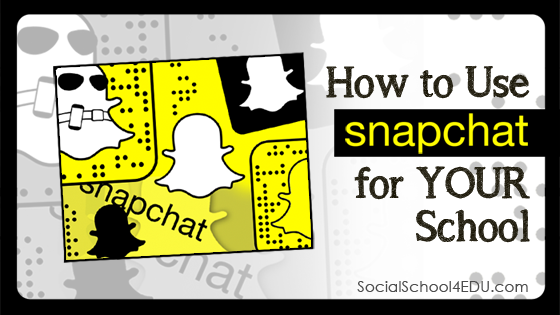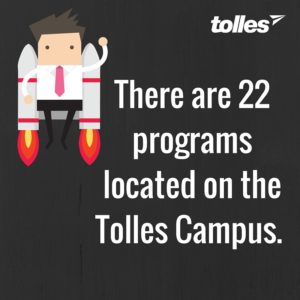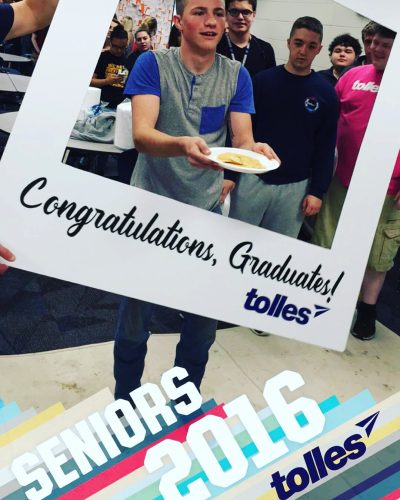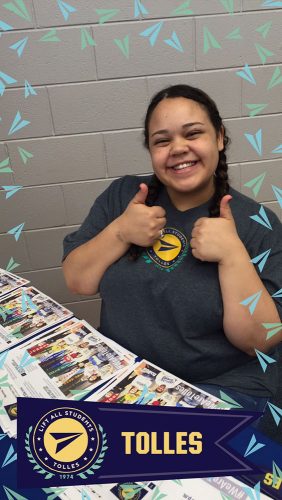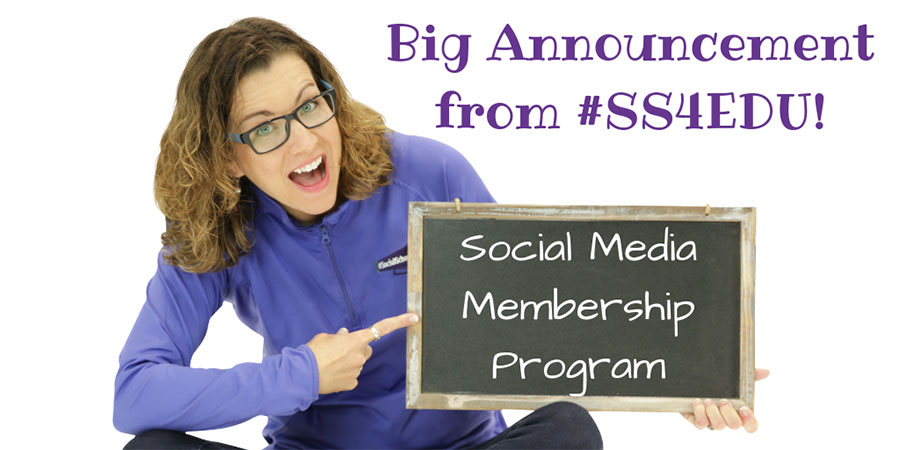It doesn’t take long to figure out where students are hanging out these days. It’s a snap!
OK, that was pretty corny. But don’t ditch me yet! Schools realize their students are hanging out on Snapchat, but they are not quite sure how to get involved. Will students even pay attention if they try?
I’ve been wanting to report on this for awhile, but since there are not a lot of schools jumping in, it’s been hard! Today I have a school willing to share all of its experiences using the popular teen platform to help you see how it is working for one district. After reading this, you’ll be better equipped to make a decision for your school.
Shane Haggerty (@shanehaggerty) is the Director of Marketing and Technology at Tolles Career and Technical Center in Plain City, Ohio. He has been on the forefront of social media for this junior and senior high school campus since 2014, and started using social media such as Twitter and Facebook back in 2007 when he worked for another school district. He’s a modest guy, but the work he has done has truly been on the cutting edge of the power of social media for schools since the beginning.
 |
 |
 |
 |
 |
I met Shane through a popular public relations chat on Twitter called #K12PRChat over 12 months ago. This past summer we got the chance to meet face to face at the NSPRA event in Chicago, and ever since then he’s been on my “Feature My School” radar. A few weeks ago, we finally got the chance to talk over the phone. I’m going to share his insight here, but the typed responses below aren’t all. We’ll actually be doing a live webinar coming up; check out the details at the end of this blog post!
Q: How has social media helped your school?
A: We are a high school campus, targeting juniors and seniors who finish their last two years of high school education by enrolling in one of our 32 career-technical education programs. We also have several middle school programs, as well, so we have a very focused teenage demographic. With our targeted focus of admissions, social media has been essential to get our story out to students and parents. We rely heavily on Twitter (@tollestech). That is our number one channel where we share daily communication. We also use Instagram, which our students love! Facebook has become a place for us to promote events and activities using boosted posts and paid advertising. I also use it to post video and photo albums.
Q: When did you launch Snapchat?
A: We launched Snapchat in September of 2015. At first we just started with random photos and no clear strategy, but now we have progressed into utilizing stories. Our stories are actually a series of photographs/graphics and sometimes video that help tell a complete story. I manage all of the stories myself. It takes time to prepare the graphics ahead of time, which I utilize Canva for and absolutely love. I plot out a Snapchat story the same way I would write a feature. We want to get across messages to our students and our prospective students (the true audience of Snapchat), so we have to be creative when doing it to “speak” in their language, but it is the same basic principles of storytelling; you’re just doing it in photos and videos with emojis and drawings and other graphics. When I go to share the stories, the pre-made graphics I have created for the story are spaced out every few minutes. This is a different process that just creating a story live or “on the fly,” which we do, as well…
Q: What is your best advice to schools who want to use Snapchat?
A: The first step is that you as the school leader in communications must get comfortable in the platform. It is very different than Facebook or Twitter, which is by design since teens have outgrown in some ways those platforms. Once you figure it out personally, create an account for your school. Ideally, you should try to pick the same username as your other channels.
Snapchat isn’t for every school. I would not recommend this platform for elementary schools. The content created for this platform is aimed directly at your middle or high school students or prospective students. I would also warn against overusing the platform. If we were chiming in every single day, maybe our students would get sick of it, but we simply promote when we are going to share something and they tune in because they know it is exclusively for them. We snap maybe one to two times per month. I focus on big events like Fall Field Day, back to school, graduation, prom, etc.
Q: Why are your students paying attention?
A: Our students tune into this platform because it is content made exclusively for them. It is quick and they don’t have to engage with it. They also realize that if they miss it, it’s gone. This puts an urgency factor to it all! Stories are only live for 24 hours on Snapchat. We help promote our upcoming stories on other social media platforms, like an Instagram photo, a tweet, or a Facebook post that says to tune in on Snapchat tonight at 7:00 pm for our latest story.
Q: What would you say to schools saying no way, Snapchat is just too risky!
A: Snapchat is actually much safer than other channels, in my opinion. No comments are allowed and the content is temporary (although you can save it for your district’s archiving and public record rules). The data that we’ve collected shows that students are seeing our posts. It is our opportunity as a school to meet our kids where they are at.
I think the true worst case scenario for school is that no one would tune in to watch our stories. So far, that isn’t happening to us. Our average story is seen on average by 300-plus Snapchat users.
Q: How do geofilters work?
A: Custom-made geofilters can be made and submitted to Snapchat to help represent your school. They are graphics that your students can use even if you aren’t super active on the platform. It allows them to make a mark on photos and videos they are taking within your school. There are two types that you can submit: on-demand or community. I’ve had success with submitting on-demand filters, where they are just available for maybe a 24-hour period (think homecoming or graduation). You have to define a time limit and a physical location. You will pay based on these two factors. For our graduation geofilter below, I paid $140 for it to be live for 13 hours around our school. It was used 278 times and was seen by more than 18,000 people. Snapchat sends you the metrics within 24 hours after the geofilter ends.
A little advice before trying to submit your artwork: they will reject hashtags on the images. Our hashtag is #LiftTolles, but that isn’t an option for geofilters. Community filters are more general artwork in nature. If you try submitting your school logo or anything branded, that will also be rejected. The community filters can be available on a long-term basis, but they are more challenging to get approved. The image below was an “on-demand” filter we used for our new student welcome event called “Tolles U” that we do each spring for the incoming class.
Looking for more?
There is a recorded webinar on this topic that can be accessed by members only. If you are interested in joining us, learn more here!

